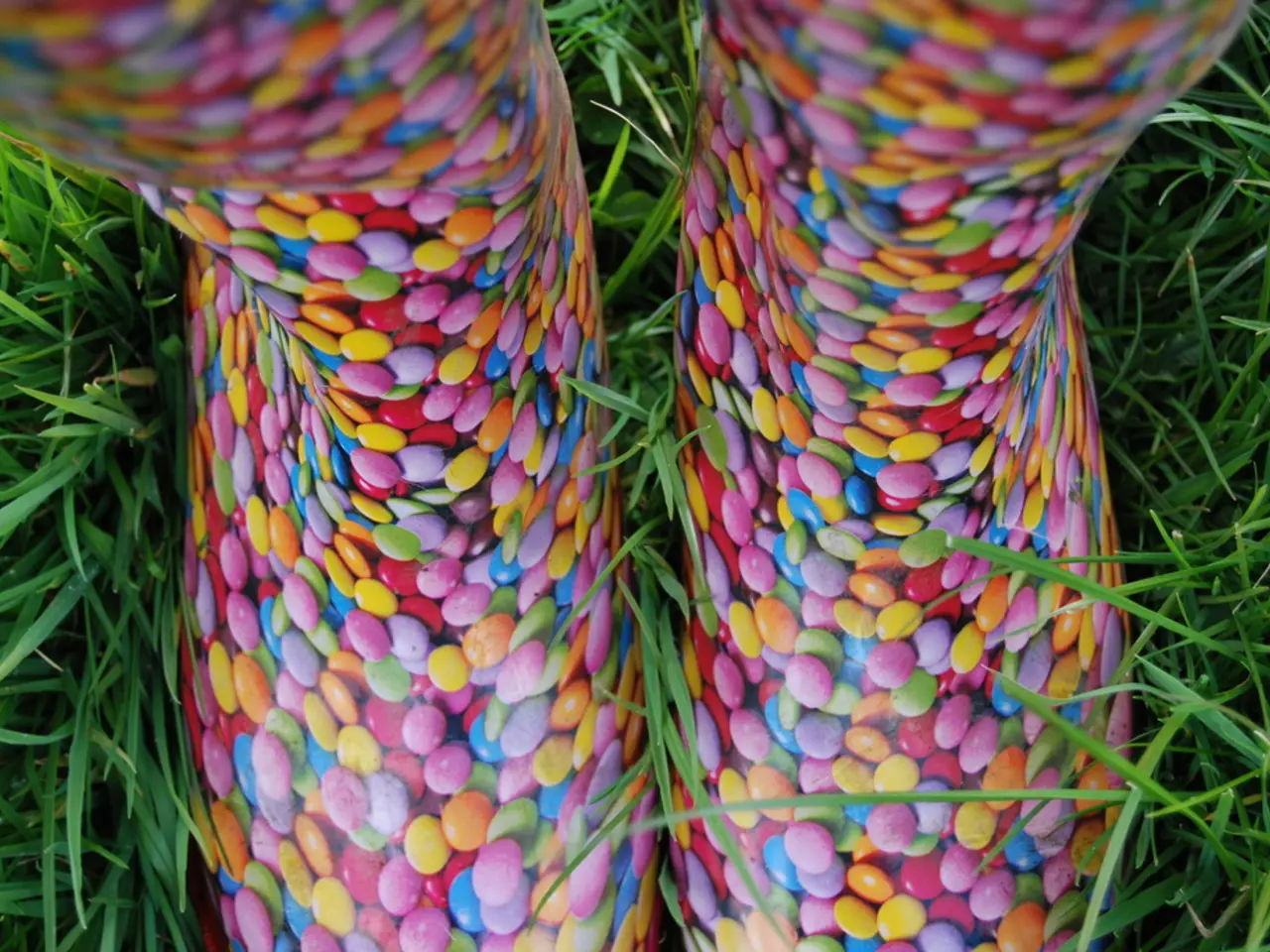January Birthstone: Garnet Overview
In the world of precious gemstones, few can match the timeless allure of garnets. With a rich history dating back to Ancient Egypt and Victorian royalty, this mineral has captivated the hearts of many for centuries.
Garnets, derived from the Middle English word 'gernet' meaning dark red, and the Latin 'granatum' meaning 'pomegranate', come in a striking palette that rivals the seeded fruit from which they take their name. The main species of garnets and their associated colors are as follows:
- Almandine, the most familiar species, displays a distinctive dark red color ranging from deep red to brownish black to violet red. - Pyrope, known for rich, deep reds often mistaken for rubies, comes in dark red, orangey red, pinkish red, and purplish red hues. Bohemian garnets, a prized subset of pyrope, boast a vibrant red color and strong inner glow. - Spessartite, a rarer species, exhibits bright orange shades, with the famous Mandarin garnets showcasing a vivid orange color. - Grossular, the most common species, comes in a wide range of colors except red, most commonly green to yellow. Popular varieties include tsavorite (vibrant emerald green) and hessonite (reddish orange to orange yellow, also known as cinnamon stones). - Andradite, known for excellent brilliance and fire, appears in yellow-green, green, brown, black, and orangey yellow tones. The most prized member is demantoid, a rare green garnet. - Uvarovite, the rarest garnet species, is characterized by a consistent rich dark green color that rivals emerald.
Some garnet varieties are blends of these species, creating unique colors such as Rhodolite (a pyrope-almandine mix) with a purple hue, Malaya (a pyrope-spessartite blend) exhibiting pink-orange or "Imperial Garnet" colors, and color-change garnets (often a mix of spessartite and pyrope) that dramatically shift color under different lighting, showing shades from brownish-green or bronze to rose or pink.
Throughout history, garnets have been highly valued for their perceived health benefits and symbolic meanings. In ancient times, garnet was used as a talisman of victory and protection for those going into battle. It was also associated with the idea of the 'Gem of faith', believed to bring good health, prosperity, and peace.
The Ancient Egyptians used garnets in jewelry and decorative carvings, while the Ancient Romans frequently used them in signet rings to seal important documents. During the Victorian era, rose-cut garnets were often mounted in gold plate or yellow gold. A famous example of garnet jewelry is a pyrope garnet hair comb from the Victorian era, housed at the Smithsonian National Museum of Natural History.
In the 19th century, garnet was a popular gem in decorative creations by the jeweler Peter Carl Fabergé and was highly favored by the Russian royal family. Bohemia and Russia were primary locations to source garnet throughout the 19th century.
Today, garnets continue to be a popular choice in various jewelry collections, including rings, statement pendants, and tiaras. They are found in many countries worldwide, including Australia, India, the Czech Republic, Myanmar, Brazil, Sri Lanka, Tanzania, and Namibia.
For those interested in enhancing their gemmology knowledge, Gem-A offers membership, publications, and short courses. Whether you're a history buff, a jewelry enthusiast, or a collector, the captivating world of garnets offers a fascinating journey through time and across the globe.
- Gem-A, a resource for gemmology enthusiasts, provides membership opportunities, publications, and short courses to enrich one's understanding of garnets.
- The foundation of gemmology knowledge can be solidified through the education-and-self-development resources offered by Gem-A.
- Alongside jewelry pieces, garnets are also integrated into various lifestyle pursuits, such as home-and-garden décor and fashion-and-beauty products.
- Garnets, which have captivated people's hearts for centuries, continue to be a popular choice for workshops, courses, and collection building.
- As a testament to their enduring appeal, garnets have been featured in significant historical artifacts like the pyrope garnet hair comb from the Victorian era housed at the Smithsonian National Museum of Natural History.




